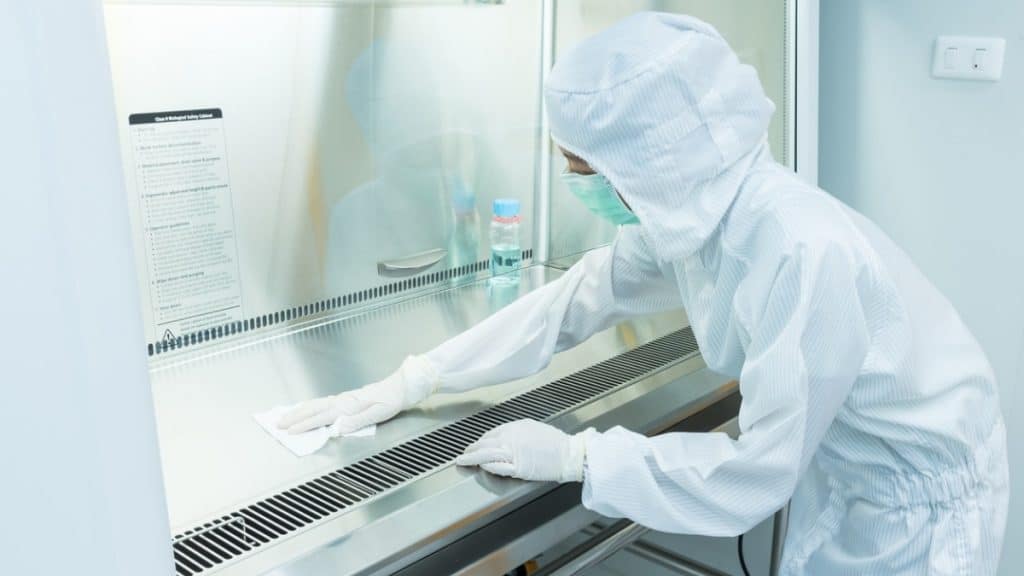Are you dealing with frequent equipment malfunctions or inaccurate experiment results? Keeping your laboratory equipment in optimal condition is crucial for achieving reliable outcomes and ensuring a safe working environment.
Effective maintenance and cleaning can significantly enhance the lifespan and performance of your lab equipment.
The Importance of Maintaining Lab Equipment
High-quality laboratory equipment is an essential component of any research or testing facility.
Regular maintenance and cleaning are crucial to prolonging the lifespan of equipment, ensuring accuracy, and preventing contamination.
Proper upkeep not only saves costs related to repairs and replacements but also supports consistent and reliable results, critical in both educational and professional settings.
Additionally, well-maintained laboratory equipment is safer to operate, reducing the risk of accidents and ensuring compliance with safety standards.
Common Types of Laboratory Equipment
Understanding the various types of lab equipment and their specific maintenance needs is the first step towards effective management.
Basic Lab Equipment
– Microscopes: Optical devices used to magnify small objects for detailed study.
– Centrifuges: Machines that spin samples at high speeds to separate substances based on density.
– Spectrophotometers: Devices used to measure the intensity of light absorbed by a sample.
Advanced Lab Equipment
– Autoclaves: Used for sterilizing equipment and materials with high-pressure steam.
– Chromatographs: Instruments used to separate and analyze mixtures of chemicals.
– Mass Spectrometers: Devices for determining the composition of a physical sample by measuring the mass of its molecules.
Understanding these differences is vital for implementing the right cleaning procedures and maintenance schedules.
Best Practices for Cleaning Laboratory Equipment
Cleaning is more than just wiping off dirt.
It involves removing residues, contaminants, and biological material that could interfere with experimental outcomes.
Guidelines for Cleaning Lab Equipment
– Follow Manufacturer’s Instructions: Always refer to the user manual for specific cleaning recommendations and restrictions.
– Use Appropriate Cleaning Agents: Different materials require different cleaning solutions, so ensure the chemicals used are compatible with the equipment.
– Avoid Harsh Scrubbing: Use soft cloths or brushes to avoid scratching or damaging surfaces.
– Rinse Thoroughly: After cleaning, use distilled water to rinse off any chemical residues.
– Dry Carefully: Ensure all parts are thoroughly dried to prevent rusting or microbial growth.
– Regular Deep Cleaning: Schedule regular, detailed cleaning sessions to address areas that might be overlooked during routine maintenance.
Adhering to these guidelines can help maintain the equipment’s functionality and prevent cross-contamination.
Maintenance Tips for Laboratory Equipment
Maintenance is about preventing breakdowns and extending the lifespan of lab equipment.
Conduct Regular Check-ups
– Inspect for Wear and Tear: Regularly check for signs of wear like frayed cables or cracked surfaces.
– Functional Tests: Run periodic tests to ensure the equipment is operating correctly.
– Replace Worn Parts: Have a schedule for replacing parts that are prone to wear.
Calibration and Adjustment
– Routine Calibration: Ensure that measuring and testing equipment is calibrated regularly to enhance accuracy.
– Adjust Settings Appropriately: Verify that any settings or operational modes are correct for intended use.
Documentation and Records
– Maintain a Logbook: Keep detailed records of maintenance activities, repairs, and calibrations.
– Track Equipment Usage: Documenting frequency and type of usage can help predict when maintenance might be necessary.
Proper documentation not only aids regular maintenance but also ensures compliance with operating standards.
Role of Lab Equipment Suppliers
Selecting reputable lab equipment suppliers plays a significant role in the maintenance and performance of laboratory tools.
Choosing a Reliable Supplier
– Quality Assurance: Reputable suppliers offer high-quality products that are robust and designed to withstand regular use.
– Support Services: Reliable suppliers provide extensive customer support, including installation, training, and troubleshooting.
– Warranty and Guarantees: Opt for suppliers that offer warranties, ensuring peace of mind regarding equipment longevity.
Importance of Supplier Guidance
Suppliers often provide valuable guidance regarding the upkeep and handling of equipment.
Their expertise can help streamline maintenance processes and prevent operational hiccups.
Common Challenges in Laboratory Equipment Maintenance
Overcoming challenges in maintaining machinery requires foresight and strategic planning.
Identifying Potential Challenges
– Availability of Spare Parts: Access to replacement parts can sometimes be limited, leading to prolonged downtimes.
– Limited Budget for Repairs: Budget constraints can affect the frequency and quality of maintenance efforts.
– Skill Gaps in Maintenance: The technical complexity of some equipment might require specialized skills not always available in-house.
Strategies to Overcome Challenges
– Strategic Partnerships: Collaborate with suppliers to ensure a steady supply of spare parts.
– Training and Development: Invest in training staff members to enhance their technical skills.
– Budget Allocation: Plan budgets carefully to accommodate unforeseen maintenance needs.
Addressing these challenges can significantly improve the reliability and efficiency of lab operations.
Conclusion
Do you have a strategy for maintaining the efficiency and longevity of your laboratory equipment? Routine maintenance and cleaning are essential practices for ensuring laboratory safety and the accuracy of experimental results.
By following the outlined practices, you can significantly reduce the risk of equipment failure and the associated costs.
Partnering with reliable lab equipment suppliers and investing in training can further enhance your lab’s productivity.
Implement these guidelines today to safeguard the performance and reliability of your laboratory equipment for years to come.
